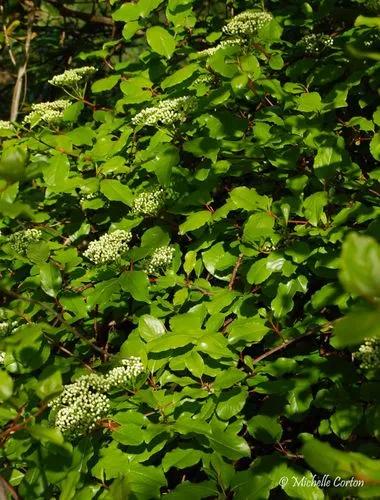Prunus maritima, the beach plum, is a species of plum native to the East Coast of the United States, from Maine south to Maryland. Although sometimes listed as extending to New Brunswick, the species is not known from collections there, and does not appear in the most authoritative works on the flora of that Canadian province.
Prunus maritima is a deciduous shrub, in its natural sand dune habitat growing 1–2 m (40–80 inches) high, although it can grow larger, up to 4 m (160 inches or over 13 feet) tall, when cultivated in gardens.
The leaves are alternate, elliptical, 3–7 cm (1.2–2.8 inches) long and 2–4 cm (0.8–1.6 inches) broad, with a sharply toothed margin. They are green on top and pale below, becoming showy red or orange in the autumn. The flowers are 1–1.5 cm (0.4–0.6 inches) in diameter, with five white petals and large yellow anthers. The fruit is an edible drupe 1.5–2 cm (0.6–0.8 inches) in diameter in the wild plant, red, yellow, blue, or nearly black.
A plant with rounded leaves, of which only a single specimen has ever been found in the wild, has been described as Prunus maritima var. gravesii (Small) G.J.Anderson, though its taxonomic status is questionable, and it may be better considered a cultivar Prunus maritima 'Gravesii'. The original plant, found in Connecticut, died in the wild in about 2000, but it is maintained in cultivation from rooted cuttings.










